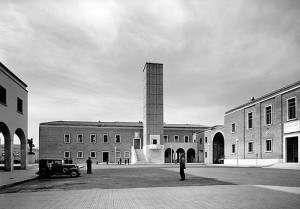While the United States and Western Europe raised eyebrows towards Stalin’s fantastical collectivization plans, Russia committed to several massive industrial projects in order to mobilize the Soviet Union’s rising communist dream. Many of these industrial projects were characterized by prometheanism, or, newfound strategies to subjugate and conquer lands for means of industry. The project of Magnitogorsk, a massive city constructed in the 1930s under Stalin’s five year plan, prevails as a paragon example of Soviet economic mobilization.
Magnitogorsk is located at the far south-east of the Ural Mountains, close to the Ural River. Unusually large iron deposits located there provided Stalin with enough incentive to build an entire city in proximity to harvest the iron for industry. To ensure efficiency, Stalin placed experienced industrial officials at the forefront of the project, while much of the hands on labor force became peasants, kulaks, or other Soviet agitators whose actions merited deportation out past the Urals to Magnitogorsk.
The first to catch on to the rise in Soviet industry, according to Wolfgang Schivelbusch in his Three New Deals, was Mussolini, who subsequently created plans to develop a series of small cities in order to rebuild a powerful Italy. Similarly to Stalin, but on a less grand scale, Mussolini created his city plans year-by-year called the “nuove citta.” Like Magnitogorsk (pre-perestroika), these impromptu, large industrial projects with little modification turned into “anti-cities.” Sabaudia, the city Schivelbusch uses as an example, is reminiscent of a deserted prison marked by its emptiness and harsh geographic structuring.
It seems as though both Stalin and Mussolini planned too far ahead for the immediate future. How beneficial were large construction projects for stimulating long term economic mobility for the Soviet Union and Fascist Italy in the 1930, despite the fact that many of these operations fell flat? Was the actual creation itself the goal?


I wonder how the public felt about their government’s money going towards these “settlement” public works projects that ultimately were more beneficial as propaganda than successful established cities. The creation was the goal but I believe in Mussolini’s mind his cities were going to be upheld as the ideal city, emulating Roman greatness. Clearly this did not happen, so I would say the goal of Mussolini’s settlement projects was not ultimately met.
I agree with Emily, the construction of the cities as an economically beneficial public work was the ultimate goal. However, I think in both the Soviet Union and Italy these cities functioned more importantly as propaganda. The West eventually looked to Magnitogorsk as an example of the power and ingenuity of the Soviet Union.